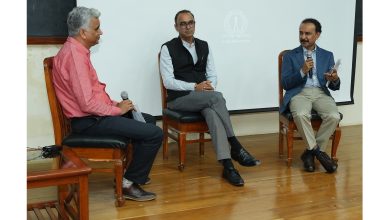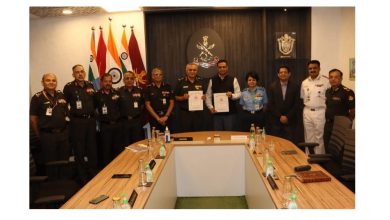Spinal TB can lead to paralysis of legs and lower parts of the body; early diagnosis essential for better outcome, say doctors of Vikram Hospital

- Of all the patients suffering from TB, one to two percent suffer from TB of the skeletal system, with TB of the spine accounting for more than half the number of cases
- Incidence of TB, including spinal TB, is intricately linked to poverty
BENGALURU / June 20, 2019: India hosts about one-fifth of the total world population of tuberculosis patients, with nearly 6 million cases of the disease existing in the country. Of all the TB patients, one to two percent suffer from TB of the skeletal system, with TB of the spine accounting for more than half the number of cases of skeletal TB. Paralysis of the leg and lower parts of the body are the most devastating complications of spinal TB (also called Pott’s Spine). The patient may get bed-ridden, with all the negative consequences for the family such as unemployment and high financial burden of treatment.
Said Dr. Amrithlal A Mascarenhas, Consultant Spine Surgery, Vikram Hospital, Bengaluru: “TB kills 1.6 million people worldwide. This disease cannot be eradicated from India till poverty remains. As long as there is poverty, there will be illiteracy, malnutrition, over-crowding, drug abuse, HIV infections, alcoholism, etc. All these factors are inter-related and lead to spread of TB. Diabetes, immunosuppressive treatment and genetic susceptibility are other risk factors. Spinal TB can affect both male and female, and any age group – children, adolescents, adults, elderly. Young adults and females in the reproductive age group are more susceptible to TB.”
Talking about the symptoms of spinal TB, Dr. Amrithlal A Mascarenhas said: “In the active stage of the disease, patients suffer from malaise, loss of weight, loss of appetite, night sweats and evening rise of body temperature. The spine become stiff and painful on movement, with localized deformity. There are persistent muscle spasms around the affected vertebrae. These vertebrae relax during sleep, permitting movement between the inflamed surfaces, resulting in typical night cries of the patient. Spinal TB may also be associated with neurologic problems caused by compression of the spinal cord.”
Said Dr. Vasunethra Kasaragod, Consultant Chest Physician, Vikram Hospital, Bengaluru: “In patients with spinal TB, anti-TB treatment should be started as early as possible. In patients with established complications of spinal tuberculosis, surgery may also be required. The treatment varies between conservative management with drugs to surgical management, or a combination of both, depending upon the severity of the disease.”
Dr. Vasunethra Kasaragod added: “Using multidrug therapy, the recurrence rate for skeletal TB is about 2 percent, although the relapse rate was much higher when treatment used to be given using a single drug. Long-term multidrug anti-TB treatment helps reduce the relapse rate of spinal TB. Effective medical and surgical management of spinal TB has improved outcome of patients significantly even in the presence of neurologic deficits and spinal deformities. Neurologic complications due to spinal TB can be relatively benign if early medical and surgical management is done. Younger age of the patient and radical surgery, along with anti-TB chemotherapy, can drastically improve the outcome.”
Talking about the various challenges in treatment of spinal TB, Dr. Amrithlal A Mascarenhas, Consultant Spine Surgery, Vikram Hospital, Bengaluru, said: “Accurate clinical diagnosis of spinal TB is often difficult as symptoms may not be definitely pertaining to TB. Multi-drug resistant TB poses a higher challenge to treat spinal TB adequately. There is a high chance of drug defaulters and recurrence of the disease due to lack of compliance from patients. Majority of them are illiterate and from poor background, and patient counselling may not give doctors the expected response.”
Said Dr. Somesh Mittal, MD & CEO, Vikram Hospital, Bengaluru: “TB has devastating consequences for the patients, their families and the society as a whole. Spinal TB is very painful and can leave the patient immobile. Early diagnosis is the key. It is a disease borne out of poverty and poor living conditions. Luckily, India’s economic growth has accelerated since liberalization of the economy. With rising per capita income and improvement in general living standards of the people, the country will hopefully be able to drastically reduce the incidence of this disease in the next couple of decades.”




